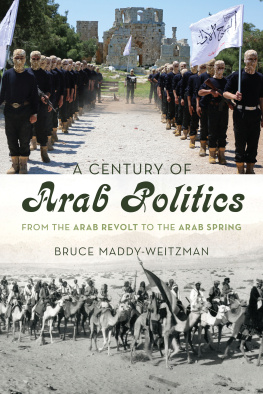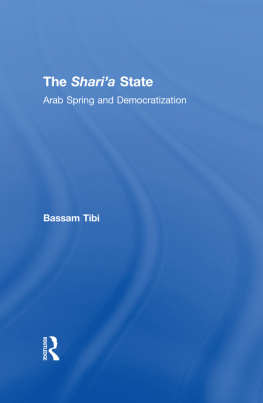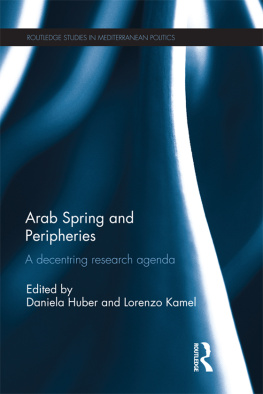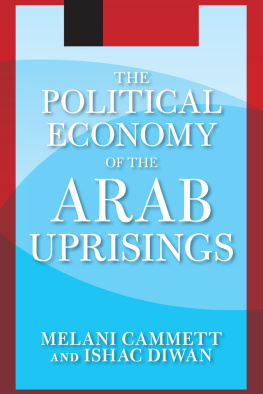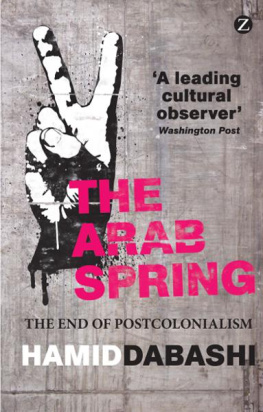Maddy-Weitzman - A century of Arab politics: from the Arab Revolt to the Arab Spring
Here you can read online Maddy-Weitzman - A century of Arab politics: from the Arab Revolt to the Arab Spring full text of the book (entire story) in english for free. Download pdf and epub, get meaning, cover and reviews about this ebook. City: Arab countries;Arabische Staaten;MENA-Region;Naher Osten, year: 2016;2012, publisher: Rowman & Littlefield Publishing Group, Inc., genre: Politics. Description of the work, (preface) as well as reviews are available. Best literature library LitArk.com created for fans of good reading and offers a wide selection of genres:
Romance novel
Science fiction
Adventure
Detective
Science
History
Home and family
Prose
Art
Politics
Computer
Non-fiction
Religion
Business
Children
Humor
Choose a favorite category and find really read worthwhile books. Enjoy immersion in the world of imagination, feel the emotions of the characters or learn something new for yourself, make an fascinating discovery.
- Book:A century of Arab politics: from the Arab Revolt to the Arab Spring
- Author:
- Publisher:Rowman & Littlefield Publishing Group, Inc.
- Genre:
- Year:2016;2012
- City:Arab countries;Arabische Staaten;MENA-Region;Naher Osten
- Rating:4 / 5
- Favourites:Add to favourites
- Your mark:
- 80
- 1
- 2
- 3
- 4
- 5
A century of Arab politics: from the Arab Revolt to the Arab Spring: summary, description and annotation
We offer to read an annotation, description, summary or preface (depends on what the author of the book "A century of Arab politics: from the Arab Revolt to the Arab Spring" wrote himself). If you haven't found the necessary information about the book — write in the comments, we will try to find it.
Maddy-Weitzman: author's other books
Who wrote A century of Arab politics: from the Arab Revolt to the Arab Spring? Find out the surname, the name of the author of the book and a list of all author's works by series.
A century of Arab politics: from the Arab Revolt to the Arab Spring — read online for free the complete book (whole text) full work
Below is the text of the book, divided by pages. System saving the place of the last page read, allows you to conveniently read the book "A century of Arab politics: from the Arab Revolt to the Arab Spring" online for free, without having to search again every time where you left off. Put a bookmark, and you can go to the page where you finished reading at any time.
Font size:
Interval:
Bookmark:
A Century of Arab Politics
A Century of Arab Politics
From the Arab Revolt to
the Arab Spring
Bruce Maddy-Weitzman
ROWMAN & LITTLEFIELD
Lanham Boulder New York London
Senior Acquisitions Editor: Marie-Claire Antoine
Associate Editor: Monica Savaglia
Marketing Manager: Kim Lyons
Production Editor: Elaine McGarraugh
Cover Designer: Neil Cotterill
Credits and acknowledgments of sources for material or information used with permission appear on the appropriate page within the text.
Published by Rowman & Littlefield
A wholly owned subsidiary of The Rowman & Littlefield Publishing Group, Inc.
4501 Forbes Boulevard, Suite 200, Lanham, Maryland 20706
www.rowman.com
Unit A, Whitacre Mews, 26-34 Stannary Street, London SE11 4AB
Copyright 2016 by Rowman & Littlefield
All rights reserved. No part of this book may be reproduced in any form or by any electronic or mechanical means, including information storage and retrieval systems, without written permission from the publisher, except by a reviewer who may quote passages in a review.
British Library Cataloguing in Publication Information Available
Library of Congress Cataloging-in-Publication Data
Maddy-Weitzman, Bruce.
A century of Arab politics : From the Arab revolt to the Arab Spring / by Bruce Maddy-Weitzman.
pages cm.
Includes bibliographical references and index.
ISBN 978-1-4422-3691-2 (cloth : alk. paper) -- ISBN 978-1-4422-3692-9 (pbk. : alk. paper) -- ISBN 978-1-4422-3693-6 (electronic)
1. Arab countries--Politics and government--20th century. I. Title.
DS36.88.M324 2016
909'.0974927082--dc23
2015030520
 TM The paper used in this publication meets the minimum requirements of American National Standard for Information Sciences Permanence of Paper for Printed Library Materials, ANSI/NISO Z39.48-1992.
TM The paper used in this publication meets the minimum requirements of American National Standard for Information Sciences Permanence of Paper for Printed Library Materials, ANSI/NISO Z39.48-1992.
Printed in the United States of America
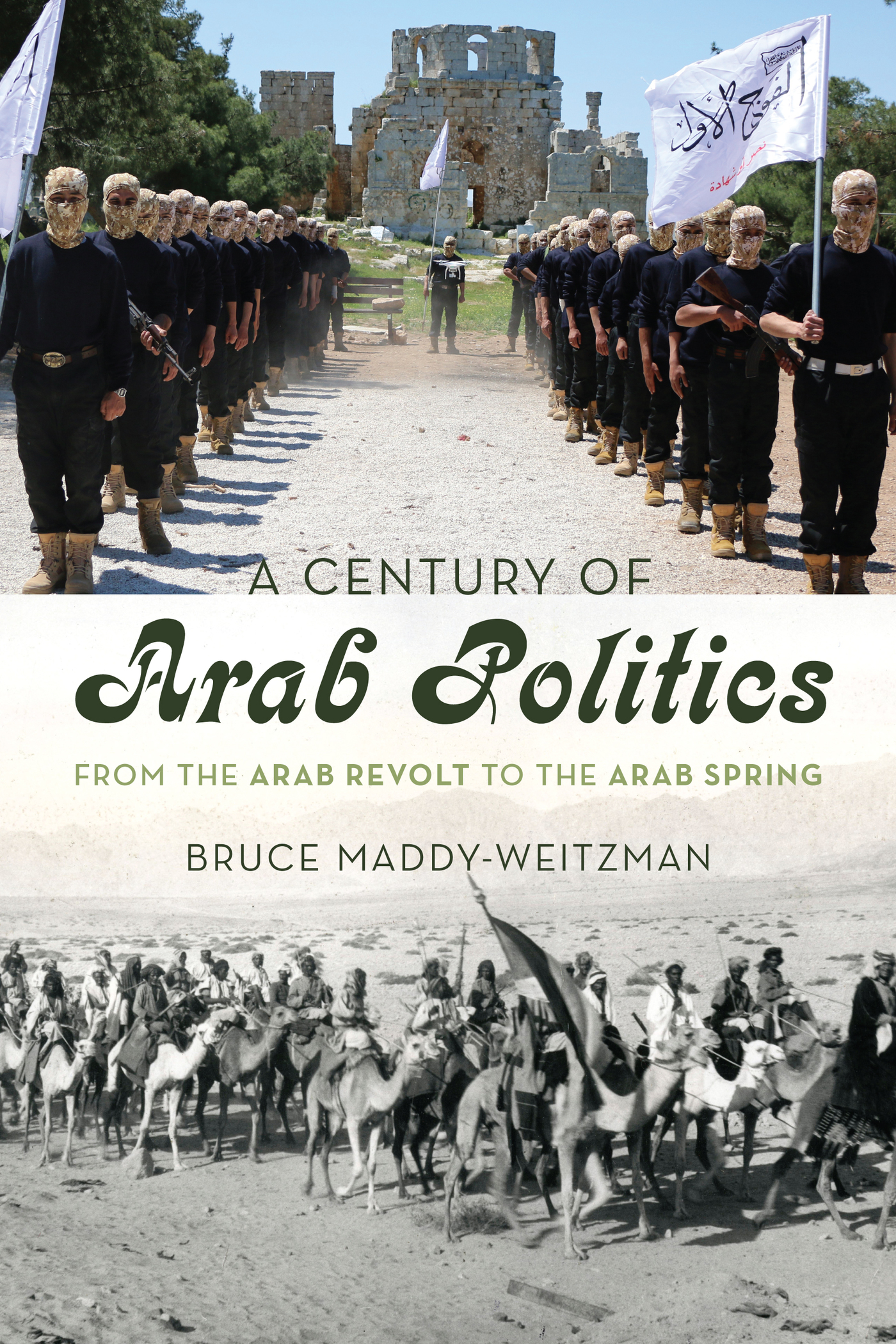
Figure I.1 Middle East and North African countries, xi
Figure 1.1 The Levant in the Ottoman Empire before World War I, 7
Figure 2.1 Sykes-Picot Agreement, 1916, 21
Figure 4.1 UN 1947 partition plan for Palestine and 1949 Armistice Agreements, 52
Figure 5.1 The June 11, 1967, and October 24, 1973, Arab-Israeli ceasefire lines, 97
Figure 8.1 The Persian Gulf Region, 136
Figure 11.1 Greater Kurdistan, 212
In one way or another, we are all products of our environment. In my case, I have had the great and good fortune to spend my professional life within the friendly confines of Tel Aviv Universitys Moshe Dayan Center for Middle Eastern and African Studies. Since arriving there thirty-six years ago as an aspiring graduate student, I have benefited immeasurably and matured as a scholar thanks in large part to the wisdom and guidance of teachers, mentors, and colleagues. Their substantial presence in the bibliography of this study reflects only a small portion of their contribution. No one could have asked for a more stimulating and supportive environment, reinforced by the solidarity and assistance of administrators and staff throughout the years. In particular, I will forever be grateful for the training and guidance of Daniel Dishon, of blessed memory. His penetrating writings on regional Arab politics during the 1970s had aroused my interest in the subject even before arriving at the Center, and the opportunity to work with and learn from him was priceless. This particular project was greatly enhanced by the constructive criticism and encouragement of two longtime friends and Center colleagues, Ofra Bengio and Asher Susser. Naturally, I am solely responsible for any remaining shortcomings. Special thanks go to Marie-Claire Antoine, senior acquisitions editor at Rowman & Littlefield, for initiating the conversation that led to this book. Thanks also to production editor Elaine McGarraugh and the entire team for shepherding the manuscript to publication, and to Robert and Cynthia Swanson for preparing the index.
This book is dedicated to the memory of another dear friend and colleague, Joseph (Yossi) Kostiner. Yossis contributions to the field of modern Middle East history are universally recognized. All who knew him would agree that his talents as a scholar were matched by his generosity of spirit, particularly toward students and younger colleagues, not to mention his ubiquitous sense of humor and fundamental human decency. I was honored when he invited me to collaborate with him in researching the dynamics of Arab regional politics, a journey that took us to places, physical and intellectual, that I never would have reached otherwise. Along the way, we received funding to support our work from the United States Institute of Peace and the Israel Foundation Trustees. Unfortunately, life interfered in various ways, and our planned joint study of contemporary Arab politics did not come to fruition. I have no doubt, however, that this particular study is informed by our years of collaboration, and I extend my belated thanks to the supporting foundations. Sadly, it is now five years since Yossi prematurely left this world, but his contribution to the Center and Department of Middle Eastern History remains ever-present, and his persona an enduring model of emulation.
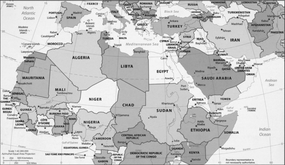
This book is a political history of the rise and decline of the Arab regional order over the course of a century of upheaval and conflict, from the 19161918 Great Arab Revolt that helped bring an end to the four-hundred-year reign of the Ottoman Empire in the predominantly Arabic-speaking lands in the Near East and North Africa, to the contemporary upheavals of the Arab Spring. The first half of that century was very much the story of pan-Arabism as an idea and a movement, which decisively shaped regional politics and collective identities, notwithstanding its limitations and ultimate failure to achieve the cherished goal of Arab unity. The second half was characterized by the strengthening and legitimation of Arab territorial states, only to witness the progressive decline of the political significance of Arab nationalism, the decline in Arab power, individually and collectively, and the unraveling of many of the Arab states that it had spawned. In the Fertile Crescent/Levant region, this even included the effective erasure of the post-World War I boundaries and sovereign order that had been established there.
At its peak, pan-Arabism offered a compelling and powerful vision of unity that promised to restore the Arabs proverbial place in the sun, i.e., achieving power, dignity, and prosperity commensurate with their idealized image of the past. It was a vision that profoundly shaped, and in multiple and contradictory ways, the twin processes of state formation and nation formation in ex-Ottoman Arab lands. But the realization of that vision proved to be elusive, foundering on the shoals of deep-rooted socio-historical factors that made it impossible to triumph over the varied and competing interests of Arab states. The failing fortunes of pan-Arabism paved the way for the pragmatic acceptance of the colonially created state order, the entrenchment of the territorial state and accompanying formulations of territorial nationalism, a distorted form of secular modernity that enabled ruling Arab elites to dominate Arab societies but without acquiring the requisite degree of institutional legitimacy necessary for addressing the fundamental needs of their increasingly embittered and alienated publics. Indeed, the absence of legitimate and effective governing institutions all but guaranteed that the Arab Spring upheavals that began in Tunisia in December 2010 and cascaded back and forth across the Arab Middle East and North Africa would not produce a stable and pluralist political order (Tunisia being a conspicuous, albeit still fragile exception). The Arab collective appeared to have reached a Shakespearean moment, to be or not to be, as religious, sectarian, and ethnic affiliations fueled civil wars and even effectively erased state boundaries, particularly in the historic birthplace of Arabism, the Levant/Fertile Crescent region.
Next pageFont size:
Interval:
Bookmark:
Similar books «A century of Arab politics: from the Arab Revolt to the Arab Spring»
Look at similar books to A century of Arab politics: from the Arab Revolt to the Arab Spring. We have selected literature similar in name and meaning in the hope of providing readers with more options to find new, interesting, not yet read works.
Discussion, reviews of the book A century of Arab politics: from the Arab Revolt to the Arab Spring and just readers' own opinions. Leave your comments, write what you think about the work, its meaning or the main characters. Specify what exactly you liked and what you didn't like, and why you think so.

